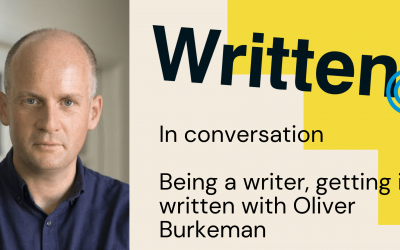Forget positive thinking, it’s time to get pessimistic. Focusing on what can go wrong can help you create a bulletproof plan to achieve your writing goals. Combine obstacle thinking with other science-backed tactics for goal setting and you’re on to building a winning writing routine.
Channel your inner Eeyore
“Good morning, Pooh Bear,” said Eeyore gloomily. “If it is a good morning,” he said. “Which I doubt,” said he. Winnie-the-Pooh by A. A. Milne
Caroline Webb is no Eeyore. Author of How to Have a Good Day, Webb has extracted all the happy-making research from neuroscience, psychology and behavioural economics to help us live on the bright side of life. That said, she found that getting negative is a great way to reinforce all your wonderfully positive intentions. And in so doing, achieve your goals and dreams.
Webb explains that thinking honestly about what will get in the way of achieving your goals, you can address these obstacles head on. She outlines the research:
“Gabriele Oettingen and Peter Gollwitzer, experts on the psychology of motivation at New York University, discovered that people are far more likely to achieve their goals if they think hard about both the outcome they want and the obstacles they’re facing, and plan for both.”
Start with a clear, achievable goal
Before you rush in and imagine the worst-case scenario you need to put in place buffers to keep you focussed and positive. That means having a goal you want to achieve.
>> Read more: How to set a writing goal: the ultimate guide
Webb suggests your goal should be broadly achievable and framed positively. That will help you to feel good about what you’re trying to do and avoid feeling daunted and depressed by considering what could go wrong.
Next, ask yourself these two questions:
- What’s most likely to get in the way of you meeting your goals today?
- What’s your ‘when-then’ contingency plan to prevent that obstacle from getting in the way?
Recap: if/when-then planning
We recently wrote about the persuasive power of ‘if/when – then’ plans to help make you more productive. This simple formula creates a powerful plan for action. It works by saying ‘if/when X happens, then I will do Y’.
>> Read more: The persuasive power of ‘if/when – then’ plans to make you more productive
For example, ‘when my alarm goes each day then I will write three morning pages,’ ‘if it’s a Tuesday evening, then I go to my writing group.’
The regular activity acts as a cue and a reminder of your writing commitment and that means you’re more likely to keep going.
As Dr Robert Cialdini, visiting professor of psychology at Stanford University, said:
“The ‘if/when-then’ wording is designed to put us on high alert for a particular time or circumstance when a productive action could be performed. We become prepared first to notice the favourable time or circumstance and, second, to associate it automatically and directly with desired conduct.”
This type of plan is incredibly effective – a review of more than 200 studies found that if/when-then planners are 300% more likely than others to reach their goals.
Consider what can go wrong
Back to thinking negatively. By considering what can go wrong, we can harness if/when-then planning to put in place a rock-solid Plan B when Plan A goes to pot.
Designer Tash Willcocks has a goal to publish a hand-drawn illustration every single day. It’s an ambitious goal, and one she’s managed to keep going for years – she’s a great case study of how to build a daily creative habit.
Despite her best intentions, she doesn’t always manage it, so she puts in place a contingency plan. She explains, “Sometimes if I know I’m going to go out drinking I do two the night before!”
If, I go out drinking, then I do two the night before.
I’m less organised than Tash, so my if/when-then plan is all about catching up afterwards. I have a daily word count goal of 250 words – if I miss one day’s target then I catch up the next day.
Thinking negatively to feel positive
Contingency planning acknowledges that things don’t always go to plan, but when they do go off course, we can get back on track.
As our science of happiness guide Caroline Webb says, “making progress towards a goal feels highly satisfying for the brain’s reward system. That small buzz when you tick something off your to-do list is your brain quietly saying, ‘Right on’.”
So, what are you waiting for? It’s time to get your brain’s reward system buzzing so you can feel good about your goals and your writing.
Top tips to harness the power of negative thinking
- Start with a goal – you need to know what you’re aiming for, and feel excited and stretched by the possibility of achieving it.
- Break the goal into a small, achievable step that you can do regularly.
- Find an activity you already do, and attach your step to it by formulating an if/when-then plan.
- Consider what could go wrong, develop a contingency if/when-then plan to keep you on track and deal with obstacles.
- If you miss your step don’t feel bad, just get back on track; and if you miss it regularly revise your step to make it more achievable.
***




